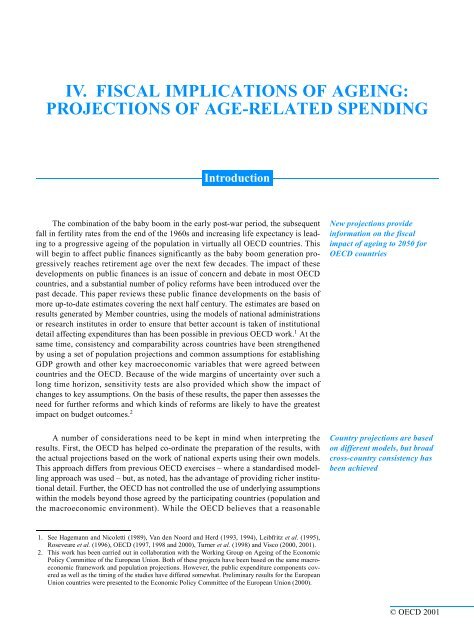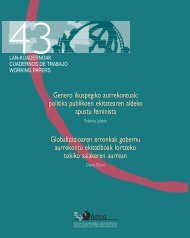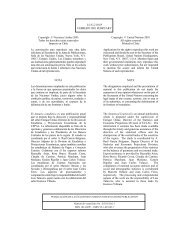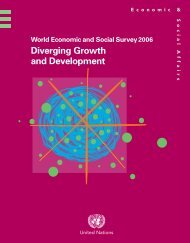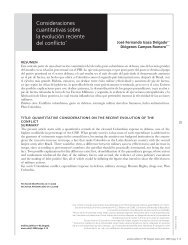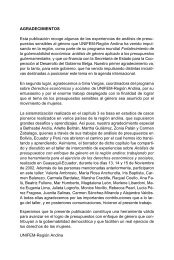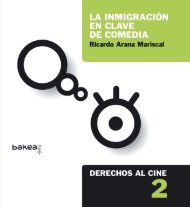OECD Economic Outlook 69 - Biblioteca Hegoa
OECD Economic Outlook 69 - Biblioteca Hegoa
OECD Economic Outlook 69 - Biblioteca Hegoa
You also want an ePaper? Increase the reach of your titles
YUMPU automatically turns print PDFs into web optimized ePapers that Google loves.
IV. FISCAL IMPLICATIONS OF AGEING:<br />
PROJECTIONS OF AGE-RELATED SPENDING<br />
Introduction<br />
The combination of the baby boom in the early post-war period, the subsequent<br />
fall in fertility rates from the end of the 1960s and increasing life expectancy is leading<br />
to a progressive ageing of the population in virtually all <strong>OECD</strong> countries. This<br />
will begin to affect public finances significantly as the baby boom generation progressively<br />
reaches retirement age over the next few decades. The impact of these<br />
developments on public finances is an issue of concern and debate in most <strong>OECD</strong><br />
countries, and a substantial number of policy reforms have been introduced over the<br />
past decade. This paper reviews these public finance developments on the basis of<br />
more up-to-date estimates covering the next half century. The estimates are based on<br />
results generated by Member countries, using the models of national administrations<br />
or research institutes in order to ensure that better account is taken of institutional<br />
detail affecting expenditures than has been possible in previous <strong>OECD</strong> work. 1 At the<br />
same time, consistency and comparability across countries have been strengthened<br />
by using a set of population projections and common assumptions for establishing<br />
GDP growth and other key macroeconomic variables that were agreed between<br />
countries and the <strong>OECD</strong>. Because of the wide margins of uncertainty over such a<br />
long time horizon, sensitivity tests are also provided which show the impact of<br />
changes to key assumptions. On the basis of these results, the paper then assesses the<br />
need for further reforms and which kinds of reforms are likely to have the greatest<br />
impact on budget outcomes. 2<br />
A number of considerations need to be kept in mind when interpreting the<br />
results. First, the <strong>OECD</strong> has helped co-ordinate the preparation of the results, with<br />
the actual projections based on the work of national experts using their own models.<br />
This approach differs from previous <strong>OECD</strong> exercises – where a standardised modelling<br />
approach was used – but, as noted, has the advantage of providing richer institutional<br />
detail. Further, the <strong>OECD</strong> has not controlled the use of underlying assumptions<br />
within the models beyond those agreed by the participating countries (population and<br />
the macroeconomic environment). While the <strong>OECD</strong> believes that a reasonable<br />
1. See Hagemann and Nicoletti (1989), Van den Noord and Herd (1993, 1994), Leibfritz et al. (1995),<br />
Roseveare et al. (1996), <strong>OECD</strong> (1997, 1998 and 2000), Turner et al. (1998) and Visco (2000, 2001).<br />
2. This work has been carried out in collaboration with the Working Group on Ageing of the <strong>Economic</strong><br />
Policy Committee of the European Union. Both of these projects have been based on the same macroeconomic<br />
framework and population projections. However, the public expenditure components covered<br />
as well as the timing of the studies have differed somewhat. Preliminary results for the European<br />
Union countries were presented to the <strong>Economic</strong> Policy Committee of the European Union (2000).<br />
New projections provide<br />
information on the fiscal<br />
impact of ageing to 2050 for<br />
<strong>OECD</strong> countries<br />
Country projections are based<br />
on different models, but broad<br />
cross-country consistency has<br />
been achieved<br />
© <strong>OECD</strong> 2001


